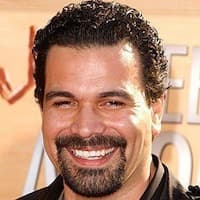James Goodale Biography
James Goodale is the former vice chairman and general counsel of the New York Times. In the Pentagon Papers case, he led the fight to defend the Times.
How old is James Goodale? – Age
Goodale is 87 years old as of 27 July 2020. He was born James C. Goodale in 1933 in Cambridge, Massachusetts, United States.
James Goodale Family
His mother was a college professor and the daughter of Shakespearean scholar Oscar James Campbell Jr., author of The Readers Encyclopedia of Shakespeare.
James Goodale Wife
Goodale is married to the former Toni Krissel of New York City, who is the President of T.K. Goodale Associates, an international fund-raising firm. They are the parents of Tim Krissel, the Principal of Bridge Haven Capital Ltd. in London, and Ashley Krissel, the formerly of the NYC Office of Legal Counsel, as well as the foster parents of Clayton Akiwenzie, a Native American and Senior Vice President of Berkadia in San Francisco.
James Goodale Net Worth
He has an estimated net worth of $2 million.
James Goodale Post-New York Times
In 1980, Goodale joined Debevoise & Plimpton. He has worked with The New York Times, Hearst Corporation, NBC, Cablevision, the New York Observer, the Paris Review, Infinity Broadcasting, and the NFL, NHL, and NBA. He represented The Times in the Supreme Court case New YorkTimes Co. v. Tasini in 2001. As George Plimpton’s lawyer, Goodale persuaded him to turn The Paris Review into a non-profit foundation. George Plimpton, Harry Evans, Tina Brown, Margaret Truman, and former New York City Mayor John Lindsay have all been personally represented by Goodale. He also served as a representative for The Nation.

James Goodale Pentagon Papers
Former Defense Department employee Daniel Ellsberg leaked the Pentagon Papers to the New York Times in March 1971. For three months, executives at the Times debated whether or not to publish them. Lord Day & Lord, the Times’ outside counsel, advised the newspaper not to publish the Papers. The Supreme Court ruled 6-3 that the US government could not prevent the Times from publishing the Papers and that the Espionage Act did not apply to publishers or the press. The Justice Department withdrew the Esp espionage claim from the case.
James Goodale Reporter’s Privilege
As of 2013, thirty-nine states and the District of Columbia had some form of a reporter’s shield law, ten other states had a common law privilege, and the majority of federal circuits recognized a reporter’s privilege. Since Goodale’s Hastings Law Review article, over 1000 reporter privilege cases have been filed in state and federal courts. Vice President Spiro Agnew subpoenaed reporters in 1973 for information on a story about a confidential criminal investigation into Agnew’s dealings while Governor of Maryland. Goodale devised a plan in which the reporters’ notes would be given to A.O. Sulzberger, publisher of the New York Times, and Katharine Graham, owner of the Washington Post.
In 1970, the US Justice Department subpoenaed New York Times reporter Earl Caldwell. Caldwell and the New York Times prevailed in the 9th Circuit Court of Appeals, establishing reporter’s privilege in any court for the first time. Caldwell v. United States was merged with two other similar cases in 1972 to form Branzburg v. Hayes. Goodale contended that using the power of contempt to resist requests for sources would lead to state and federal courts recognizing a qualified reporter’s privilege. They would refuse to hand them over to the court, according to Sulzberger and Washington Post owner Katharine Graham.
If Agnew wanted the notes, the judge would have to imprison the owners of the country’s two largest newspapers. New York, 1978. Myron Farber, a Times reporter, was subpoenaed by a New Jersey state court in the murder trial of Dr. Mario Jascalevich and refused to testify on Goodale’s advice.



